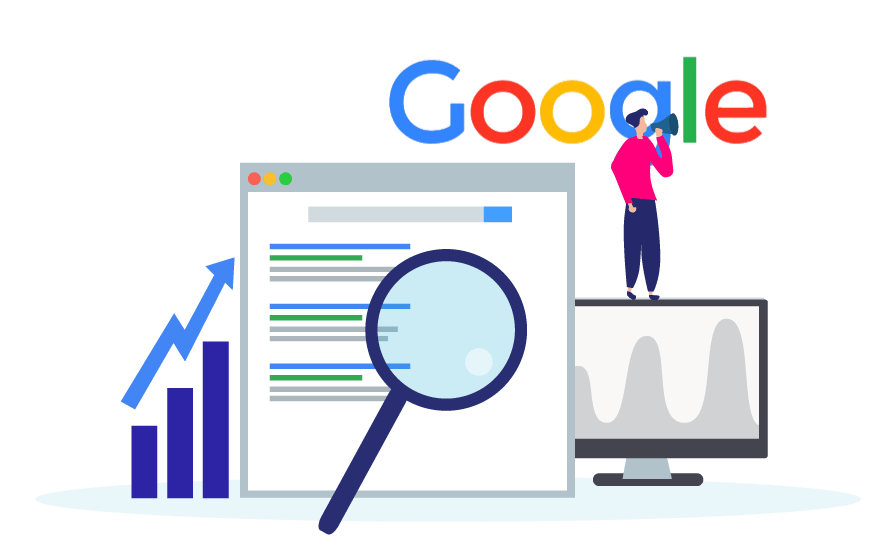Our buddy, Googlebot, has become a stickler for a quick loading page just like you and me. In a world of instant gratification, no one wants to sit around waiting, so sites with get-up-and-go certainly get to see their work pay off.
Page Speed Optimization and SEO go hand-in-hand.
I have been in the SEO world since the days where keyword stuffing, content rewriting, and paid press releases could get you on page 1 globally for a specific term. But alas, the hustle got a bit harder with metrics like Page Speed Optimization. There was an evolution of the ‘Google God’ robots and those days of easy top SERP rankings are gone. If you’re considering a website overhaul, this is for you. 
Speedy, personalized, localized organic search results are now considered the ‘in-crowd.’
Google now serves personalized and localized organic results along with their highly effective paid ads and remarketing campaigns across all of their networks, e.g. Google My Business (GMB), YouTube, and Google Lens, but even if you’re on top of all of these, having your page load slowly can crush those efforts.
There is always work to be done for marketing your site, and it goes hand in hand with SEO for Page Performance.
This is where your website quality and speed play a huge role. There is no use in paying $100,000 in Google AdWords if your website is on the struggle bus and can’t convert. I am 100% convinced that you will actually lose rank and ad importance if people bounce a few seconds after clicking your website.
It’s always wise to have an optimization plan from the get-go.
There are two main design areas to focus on when it comes to your page speed optimization efforts: Design and Technology.
Planning Optimization for Design:
You’ll want to ask yourself things like, “What is my design plan? Will I include a contact form, request for quote, ecommerce, education and information, or do I just need a portal that the public doesn’t actually need to find?”
In your optimization plan, you will want to develop your funnels, and plan your KPIs for performance tracking. What will a conversion look like for you? Are you using Social Media integrations?
Consider the plugins you might want to use, and keep in mind that you should delete any plugins you don’t intend to use because even when they are disabled, they still use up valuable resources that affect your page load, if even by a fraction of a second – that still adds up!
You will also need to consider how you will test your optimizations, and set up A/B conversion tracking to gain the most value via the smallest set of resources.
Planning Optimization for Technology:
Here is where you look at your stack. Whoa whoa whoa… eyes up here. There are a lot of options out there, but I am a fan of LAMP (Linux, Apache, MySQL, and PHP). Both WordPress and Drupal run on LAMP, and it’s a time-tested stack used throughout the opensource community. I also believe there is a future in JAM (JavaScript, API, and Markup) due to its performance capabilities.
Your technology plan also encompasses your CMS/Framework. Once you have chosen the best fit for your website, it is wise to plan your plugins, third party applications (like Hubspot, Authorize.net, or Stripe), and even your image handlers in advance.
Getting Started:
My team and I have been through all the planning and all the steps on multiple occasions, and have seen what works and what needs help. Planning your design and technology optimization in advance is crucial.
While this article is filled with helpful information and guidance, it scratches the surface of what you will need to know when putting together your strategy. Which is why, I’ve created a free downloadable ebook with a whole plethora of in-depth information on page speed optimization.
In this material, you will learn about the key points of optimizing your site for Page Speed where I cover the following topics:
- Page speed optimization is part of SEO!
- Plan your optimization in as much detail as possible.
- Choose the best CMS for your website’s goals.
- Design for mobile first.
- Image sizes (they’re super-important!)
- Concatenate and Minify wherever possible.
- Allow caching with every possible opportunity.
Let CommonPlaces help you create and implement your Page Speed Optimization Strategy
When you dive into it, Page Speed Optimization is actually a LOT to think about, and that is why my team is happy to answer any questions you may have about the optimization planning process. We’ve been through all the planning and all the steps, and worked with both large and small businesses to come up with the best solution for their website optimization. We continue to keep up with the latest and greatest best practices – so our clients can focus on running their business.
CTA: Download our FREE ebook: Page Speed Optimization – From the Ground, Up.



